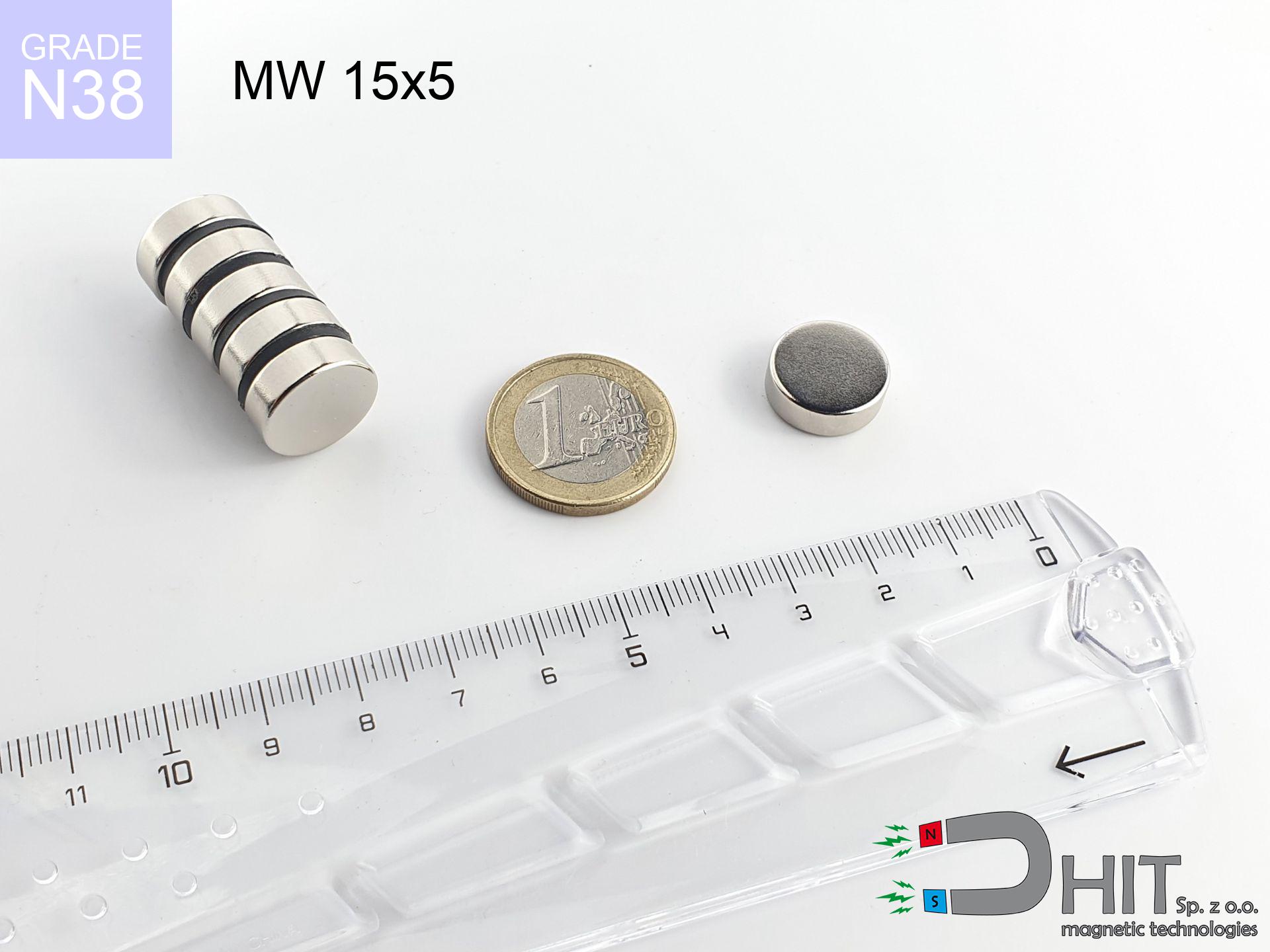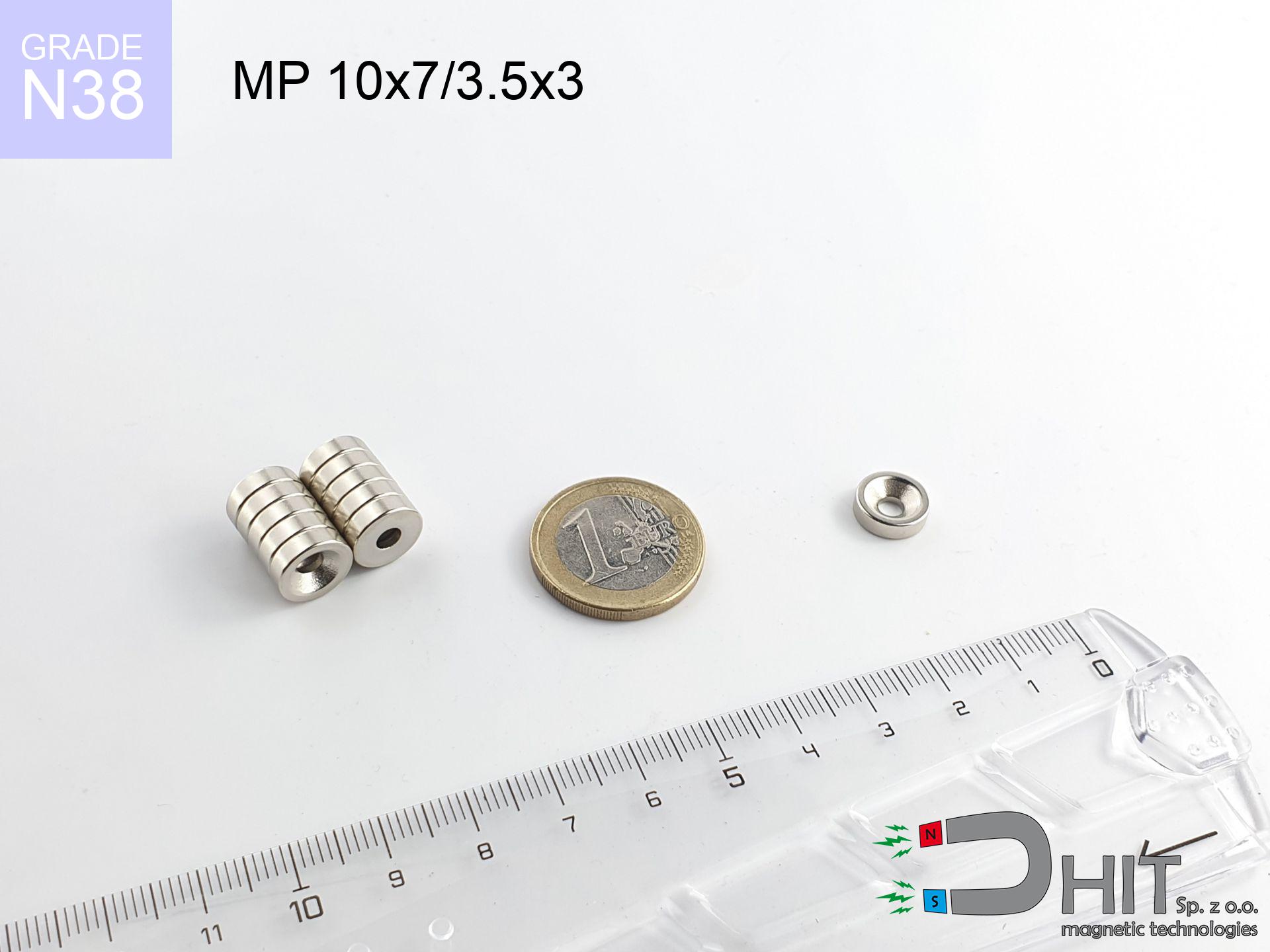UMGGZ 88x8.5 [M8] GZ / N38 - rubber magnetic holder external thread
rubber magnetic holder external thread
Catalog no 340313
GTIN: 5906301814757
Diameter Ø [±0,1 mm]
88 mm
Height [±0,1 mm]
8.5 mm
Weight
193 g
Load capacity
42.9 kg / 420.71 N
40.59 ZŁ with VAT / pcs + price for transport
33.00 ZŁ net + 23% VAT / pcs
bulk discounts:
Need more?Want to negotiate the price?
Call us +48 22 499 98 98 or write via form on the contact page. Test the magnet's power with our power calculator.
Orders placed by 14:00 are shipped the same day.
UMGGZ 88x8.5 [M8] GZ / N38 - rubber magnetic holder external thread
Magnetic properties of material N38
Physical properties of NdFeB
Shopping tips
Advantages and disadvantages of neodymium magnets NdFeB.
In addition to their pulling strength, neodymium magnets provide the following advantages:
- Their strength remains stable, and after around 10 years, it drops only by ~1% (according to research),
- They remain magnetized despite exposure to magnetic surroundings,
- By applying a shiny layer of gold, the element gains a modern look,
- They exhibit extremely high levels of magnetic induction near the outer area of the magnet,
- They are suitable for high-temperature applications, operating effectively at 230°C+ due to advanced heat resistance and form-specific properties,
- The ability for accurate shaping and adjustment to specific needs – neodymium magnets can be manufactured in many forms and dimensions, which extends the scope of their use cases,
- Important function in cutting-edge sectors – they are utilized in data storage devices, electric motors, medical equipment along with high-tech tools,
- Thanks to their power density, small magnets offer high magnetic performance, with minimal size,
Disadvantages of NdFeB magnets:
- They may fracture when subjected to a powerful impact. If the magnets are exposed to mechanical hits, it is advisable to use in a protective case. The steel housing, in the form of a holder, protects the magnet from cracks while also enhances its overall strength,
- High temperatures may significantly reduce the field efficiency of neodymium magnets. Typically, above 80°C, they experience permanent weakening in performance (depending on form). To prevent this, we offer heat-resistant magnets marked [AH], capable of working up to 230°C, which makes them perfect for high-temperature use,
- Due to corrosion risk in humid conditions, it is common to use sealed magnets made of synthetic coating for outdoor use,
- Using a cover – such as a magnetic holder – is advised due to the challenges in manufacturing holes directly in the magnet,
- Possible threat related to magnet particles may arise, when consumed by mistake, which is crucial in the family environments. Moreover, tiny components from these magnets can hinder health screening after being swallowed,
- Due to a complex production process, their cost is relatively high,
Safety Precautions
You should maintain neodymium magnets at a safe distance from the wallet, computer, and TV.
The strong magnetic field generated by neodymium magnets can damage magnetic media such as floppy disks, video tapes, HDDs, credit cards, magnetic ID cards, cassette tapes, or other devices. They can also destroy videos, televisions, CRT computer monitors. Do not forget to keep neodymium magnets away from these electronic devices.
The magnet coating contains nickel, so be cautious if you have a nickel allergy.
Studies show a small percentage of people have allergies to certain metals, including nickel. An allergic reaction often manifests as skin redness and rash. If you have a nickel allergy, you can try wearing gloves or simply avoid direct contact with nickel-plated neodymium magnets.
People with pacemakers are advised to avoid neodymium magnets.
Neodymium magnets generate very strong magnetic fields that can interfere with the operation of a pacemaker. This happens because such devices have a function to deactivate them in a magnetic field.
Keep neodymium magnets as far away as possible from GPS and smartphones.
Neodymium magnets generate strong magnetic fields that interfere with magnetometers and compasses used in navigation, as well as internal compasses of smartphones and GPS devices.
Neodymium magnets can demagnetize at high temperatures.
Under specific conditions, Neodymium magnets may experience demagnetization when subjected to high temperatures.
Dust and powder from neodymium magnets are flammable.
Do not attempt to drill into neodymium magnets. Mechanical processing is also not recommended. If the magnet is crushed into fine powder or dust, it becomes highly flammable.
Neodymium magnets are the strongest magnets ever created, and their power can shock you.
Read the information on our website on how to properly utilize neodymium magnets and avoid significant harm to your body and unintentional disruption to the magnets.
It is important to keep neodymium magnets away from children.
Neodymium magnets are not toys. Be cautious and make sure no child plays with them. They can be a significant choking hazard. If multiple magnets are swallowed, they can attract to each other through the intestinal walls, causing significant injuries, and even death.
Neodymium magnets can attract to each other, pinch the skin, and cause significant injuries.
Magnets will crack or crumble with careless connecting to each other. You can't move them to each other. At a distance less than 10 cm you should have them very firmly.
Magnets made of neodymium are extremely delicate, they easily fall apart and can crumble.
Magnets made of neodymium are delicate as well as will crack if allowed to collide with each other, even from a distance of a few centimeters. They are coated with a shiny nickel plating similar to steel, but they are not as hard. At the moment of collision between the magnets, tiny sharp metal pieces can be propelled in various directions at high speed. Eye protection is recommended.
Safety rules!
To show why neodymium magnets are so dangerous, see the article - How very dangerous are powerful neodymium magnets?.

![Practical magnet holder with rubber coating UMGGZ 88x8.5 [M8] GZ / N38 Practical magnet holder with rubber coating UMGGZ 88x8.5 [M8] GZ / N38](https://cdn3.dhit.pl/graphics/banners/magnet.webp)
![UMGGZ 88x8.5 [M8] GZ / N38 - rubber magnetic holder external thread](https://cdn3.dhit.pl/graphics/products/umg-88x8.5-m8-gz-waf.jpg)





